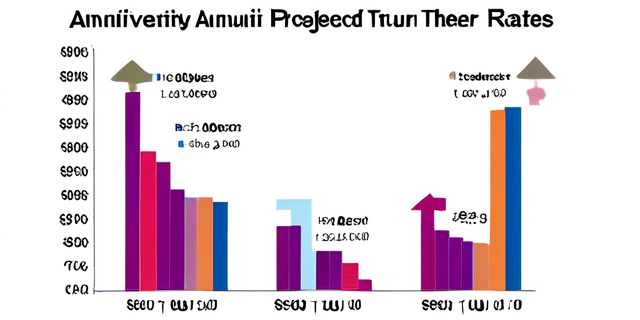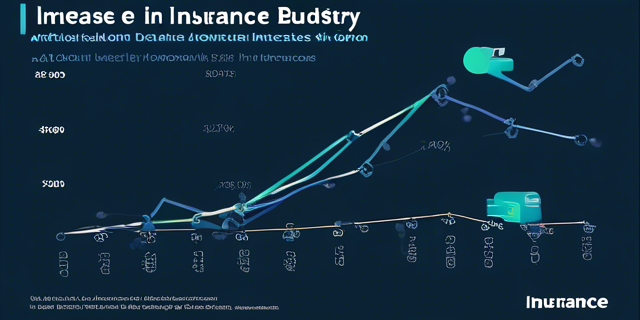Demystifying Fixed Annuity Calculations: Your Ultimate Guide to Securing Retirement Income

As you embark on the journey of retirement planning, one of the most crucial decisions you’ll face is how to ensure a steady and reliable income stream during your golden years. Enter the fixed annuity – a financial product that has gained significant traction among those seeking a predictable source of income. However, understanding the intricacies of fixed annuity calculations can be a daunting task. Fear not, for this comprehensive guide is here to demystify the process and empower you to make informed decisions about your retirement income.
Before we dive into the calculations, let’s begin with a brief introduction to fixed annuities. A fixed annuity is a contract between you and an insurance company, where you make an upfront lump sum payment or a series of premium payments. In return, the insurance company guarantees to provide you with a fixed stream of income payments, typically for the remainder of your life or for a specified period.
Unlike variable annuities, which are tied to the performance of underlying investments, fixed annuities offer a predetermined rate of return, providing a sense of security and predictability. This stability can be particularly appealing for those who are risk-averse or nearing retirement age.
The calculation of your fixed annuity payments involves several key factors, each playing a crucial role in determining the amount you’ll receive. Understanding these factors will help you make informed decisions and set realistic expectations.
The premium amount, or the lump sum you invest upfront, is one of the primary determinants of your annuity payments. Generally, the higher the premium, the larger your future income stream will be. However, it’s essential to strike a balance between maximizing your annuity payments and ensuring you have sufficient liquid assets for other expenses or emergencies.
Your age and life expectancy at the time of purchasing the annuity significantly impact the calculation of your payments. Insurance companies utilize actuarial tables and mortality data to estimate the duration of your income stream. The older you are when you purchase the annuity, the higher your expected payments will be, as the company assumes a shorter payout period.
The interest rate, or the crediting rate, is a critical factor in determining your annuity payments. Insurance companies invest the premiums they receive and use the returns to fund the income stream. Higher interest rates generally result in higher annuity payments, as the company can generate greater returns on its investments.
When you purchase a fixed annuity, you’ll have the option to choose between a lifetime payout or a period-certain payout. A lifetime payout guarantees income for as long as you live, while a period-certain payout provides payments for a predetermined number of years. The payout period you select will significantly impact the calculation of your annuity payments.
Now that we’ve covered the key factors, let’s delve into the mechanics of fixed annuity calculations. While the formulas used by insurance companies can be complex, understanding the basic principles can help you better grasp the process.
Fixed annuity calculations rely heavily on the concepts of present value and future value. Present value refers to the current worth of a future stream of payments, while future value represents the value of a present sum at a specific point in the future, taking into account interest or investment growth.
Insurance companies use these principles to determine the amount of premium required to generate a desired income stream or to calculate the income stream based on a given premium amount.
There are several formulas used in fixed annuity calculations, each tailored to specific scenarios. The most commonly used formulas include:

- Future Value of an Annuity Due: This formula is used to calculate the future value of a series of periodic payments, assuming the payments are made at the beginning of each period.
- Present Value of an Annuity Due: This formula calculates the present value of a series of periodic payments, assuming the payments are made at the beginning of each period.
- Future Value of an Ordinary Annuity: Similar to the future value of an annuity due, but the payments are made at the end of each period.
- Present Value of an Ordinary Annuity: This formula determines the present value of a series of periodic payments, with payments made at the end of each period.
While the specific formulas can be complex, involving factors like interest rates, payment periods, and present or future values, many online calculators and tools can simplify the process for you.
In today’s digital age, numerous online calculators and tools are available to assist you in estimating your fixed annuity payments. These calculators can provide a quick and convenient way to explore different scenarios and gain insights into the potential income stream you could receive.
Several reputable websites offer free and user-friendly fixed annuity calculators. These include:
- Immediate Annuities by Immediateannuities.com
- Annuity Calculator by Annuity.com
- Fixed Annuity Calculator by CalculatorSoup.com
These calculators typically require you to input information such as your age, desired payout period, premium amount, and interest rate assumptions. In return, they provide an estimate of your expected annuity payments.
Online calculators offer several advantages over manual calculations:
- Convenience: You can access these calculators from anywhere with an internet connection, allowing you to explore annuity options at your convenience.
- Accuracy: Reputable calculators are designed to perform complex calculations accurately, minimizing the risk of errors that could occur with manual calculations.
- Scenario Analysis: Many calculators allow you to adjust various inputs, enabling you to analyze different scenarios and compare potential outcomes.
- Ease of Use: Most online calculators have user-friendly interfaces, making them accessible even for those with limited financial knowledge.
While online calculators can be incredibly useful, it’s important to remember that they provide estimates based on the inputs you provide. For more precise calculations and personalized advice, it’s recommended to consult with a financial advisor or an insurance professional.
While online resources and calculators can be invaluable, seeking the guidance of a professional financial advisor can offer several benefits when it comes to fixed annuity calculations and retirement planning.
A financial advisor can provide personalized advice tailored to your unique financial situation, risk tolerance, and retirement goals. They can assess your overall portfolio, income needs, and other factors to determine if a fixed annuity is the right choice for you and recommend the most suitable product.
Fixed annuities are just one component of a comprehensive retirement plan. A financial advisor can help you understand how fixed annuities fit into the broader context of your retirement strategy, taking into account other income sources, such as Social Security, pensions, and investments.
The world of annuities can be complex, with various riders, fees, and fine print to consider. A knowledgeable financial advisor can help you navigate these intricacies, ensuring you understand the terms and conditions of the annuity contract before making a commitment.
Financial advisors often have access to institutional resources and tools that may not be available to individual investors. These resources can provide more sophisticated fixed annuity calculations, taking into account factors that may be overlooked by generic online calculators.
While fixed annuity calculations are crucial in determining your potential income stream, there are other important factors to consider when evaluating fixed annuities as part of your retirement plan.
Fixed annuities are designed to provide a steady income stream, but they may come with restrictions on accessing your principal investment or early withdrawal penalties. It’s essential to assess your potential need for liquidity and ensure that a fixed annuity aligns with your overall financial situation.
Over time, inflation can erode the purchasing power of your fixed annuity payments. Some annuity contracts offer inflation protection riders, which can help your payments keep pace with rising costs of living. However, these riders often come at an additional cost, so it’s crucial to weigh the trade-offs.
When you purchase a fixed annuity, you’re essentially entering into a long-term contract with an insurance company. It’s imperative to research the credibility and financial strength of the insurer to ensure they have the resources to fulfill their obligations over the duration of the contract.
Depending on your specific circumstances, fixed annuities may have implications for estate planning and inheritance. Some annuity contracts include provisions for beneficiaries or allow for the transfer of remaining funds to your heirs upon your passing. It’s wise to consult with an estate planning professional to understand the implications for your particular situation.
Navigating the world of fixed annuity calculations can be daunting, but with the right knowledge and resources, you can demystify the process and make informed decisions about securing a reliable retirement income stream. By understanding the key factors influencing annuity calculations, leveraging online tools and professional guidance, and considering broader financial implications, you can confidently evaluate fixed annuities as part of your comprehensive retirement plan.
Remember, retirement planning is a highly personalized journey, and what works for one individual may not be suitable for another. Embrace the complexities, ask questions, and don’t hesitate to seek professional advice when needed. With diligence and a holistic approach, you can unlock the secrets of fixed annuity calculations and pave the way towards a financially secure and fulfilling retirement.
Frequently Asked Questions (FAQs)
Q1: How does my age impact fixed annuity calculations?
Your age at the time of purchasing a fixed annuity plays a significant role in determining your annuity payments. Generally, the older you are, the higher your expected payments will be, as insurance companies assume a shorter payout period based on life expectancy calculations.
Q2: Can I access my principal investment in a fixed annuity?
Fixed annuities are designed to provide a steady income stream, but they often come with restrictions on accessing your principal investment or early withdrawal penalties. It’s crucial to review the terms and conditions of your specific annuity contract to understand the liquidity options and potential penalties.
Q3: What happens to my fixed annuity payments if I outlive my life expectancy?
If you choose a lifetime payout option for your fixed annuity, the insurance company is obligated to continue making payments for as long as you live, even if you exceed your projected life expectancy. This is one of the key benefits of fixed annuities, as they can help mitigate the risk of outliving your retirement savings.
Q4: Is it possible to include inflation protection in a fixed annuity?
Yes, some fixed annuity contracts offer inflation protection riders, which can help your annuity payments keep pace with rising costs of living over time. However, these riders typically come at an additional cost, so it’s important to weigh the trade-offs and determine if the added expense is worthwhile based on your specific circumstances.
Q5: How can I evaluate the financial strength of an insurance company before purchasing a fixed annuity?
Evaluating the financial strength and credibility of an insurance company is crucial when considering a fixed annuity, as you’re entering into a long-term contract. You can research the company’s credit ratings from agencies like A.M. Best, Moody’s, and Standard & Poor’s, as well as review their financial statements and customer satisfaction ratings.









This is an amazing page. The outstanding information reveals the owner’s accountability. I’m in awe and eagerly await more amazing postings like this one.
Thank you